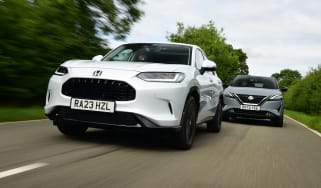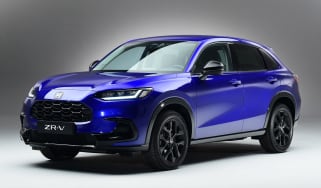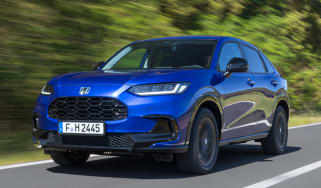Honda ZR-V review
Honda’s answer to the Nissan Qashqai features a slick hybrid setup and generous cabin space, but it’s not without its flaws

The Honda ZR-V shows an understanding of what a lot of people want from a mid-size SUV. It’s very spacious, well built and offers impressive real-world fuel economy thanks to its hybrid powertrain. The simple, logical cabin and infotainment set-up are also plus points, as is the generous amount of standard equipment.
However the ZR-V is several thousand pounds more expensive to buy than hybrid versions of the Honda’s more practical, and arguably better looking, family SUV rivals. We also can’t help but feel that most buyers would be better served by Honda’s highly acclaimed Civic hatchback, as it uses the same hybrid setup and is better value for money.
Our choice: Honda ZR-V e:HEV Sport
About the Honda ZR-V
Honda, like all major car makers, has recognised that SUVs are what brings in the big bucks. That’s why the Japanese brand recently doubled the number of SUVs in its lineup, with the new mid-size ZR-V and all-electric e:Ny1 joining the familiar compact HR-V and larger CR-V. The latter has actually grown in size for the latest sixth-generation model, which has allowed the ZR-V to sit underneath.
That puts the ZR-V in the firing line of some of the best-selling cars in the UK, including the head-turning Hyundai Tucson – our Mid-size SUV of the Year for the past three years – plus the tech-filled Kia Sportage and Renault Austral, comfort-focused Citroen C5 Aircross, versatile Skoda Karoq and Volkswagen Tiguan, and hugely popular Nissan Qashqai. There are also plenty of all-electric family cars it competes with, including the Hyundai Ioniq 5, Nissan Ariya and Skoda Enyaq iV.
More reviews
Car group tests
Road tests
The ZR-V is, in effect, a crossover version of Honda’s popular family hatchback, and our Affordable Hybrid Car of the Year for 2023, the Civic. It uses the same platform as the Civic, and like the acclaimed hatch, it’s only available with Honda’s e:HEV hybrid powertrain. This combines a four-cylinder petrol engine under the bonnet with two electric motors, all working together to drive the front wheels.
The engine is mainly used as a generator to power its minute 1.05kWh battery pack, which in turn feeds the electric motors, but it can drive the front wheels directly at high speeds. It’s a complex system on paper, but on the road it’s extremely smooth and allows the ZR-V to drive like an EV, just with a petrol engine whirring away in the background.
As well as the sole powertrain option in the ZR-V, there are just three trim levels to choose from: Elegance, Sport and Advance. Even entry-level Elegance models are generously equipped with 18-inch alloy wheels, a 10.2-inch digital driver’s display, nine-inch touchscreen, Android Auto and wireless Apple CarPlay connectivity, front and rear parking sensors, a reversing camera and a suite of driver-assistance and safety features called Honda Sensing.
We’d go for the Sport trim ourselves, as it adds wireless smartphone charging, extra USB ports, a powered tailgate and half-leather seats, plus some styling tweaks. Top-of-the-range Advance models come with a panoramic sunroof and a Bose sound system, among other luxuries. There isn’t much in the way of customisation for ZR-V buyers, with most personalisation coming from a range of colours and exterior styling packs.

Of course you should expect plenty of standard kit when you consider the ZR-V’s price tag. It currently starts from a fiver under £39,500, which is several thousand pounds more expensive than hybrid versions of the Kia Sportage or Hyundai Tucson. In fact, the ZR-V has a higher starting price than the all-electric Skoda Enyaq.
For an alternative review of the Honda ZR-V, visit our sister site carbuyer.co.uk...






